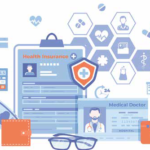Much has been written about the allure of dermatology among medical students. In some years, about 10–15% of the Harvard graduating class apply to this specialty. Despite this surfeit of riches, some dermatologists confide their relative unease about this oversized interest in their craft. Too often, they have observed how after professing an unstinted commitment to medical dermatology during their application interviews, many of their residents make a beeline for the cosmetic angle of skin care.2
Is there a way to convince students to take that fork in the road and head toward us?
In a similar vein, there is a heightened interest and an intense competition for training slots in radiology, ophthalmology and anesthesiology. Along with dermatology, the first letters of these four specialties form the often cited mnemonic, ROAD, cynically viewed by some as the road to riches. Nowadays, lifestyle and financial considerations affect career choices to a greater degree than they previously have.2 Although rheumatology can compete with the former, it struggles with the latter. But recent surveys identify rheumatologists as being the happiest—though clearly not the wealthiest—doctors, proving once again that money does not buy happiness. (See Rheuminations: Life, Happiness, and the Pursuit of Rheumatology, September 2012.)
Let’s face it: The practice of rheumatology is facing some fairly stiff headwinds that threaten our ability to grow, prosper and thrive as a specialty. Despite the best intentions of the ACR, the Rheumatology Research Foundation and fellowship programs to recruit the next generation of rheumatologists, our workforce census remains flat.3
Rheumatologists may be among the happiest doctors, the quality of our lifestyle is second to none, and our work is intellectually stimulating, yet we are faced with this paradox: Why can’t we expand our workforce? We are currently attracting the equivalent of about one U.S.-trained medical student per medical school per year.
To sort through this conundrum, it may be best to start at the beginning: Who gets accepted into medical school? How much exposure is there to rheumatology? How can we get into the minds of our students and generate passion and excitement for the dazzling array of connective tissue diseases, principles of musculoskeletal medicine and concepts of autoimmunity that blend together to create our vocation? Or are we doomed to failure because medical students inherently prefer disciplines that seem better defined and offer greater remuneration? Is there a way to convince students to take that fork in the road and head toward us?
Getting In
It’s fair to say that becoming a doctor requires a solid commitment based on a passion for learning and a willingness to help and heal others. Getting into medical school is akin to a steeplechase, with lots of hurdles to jump and ditches to dodge. In contrast to business and law schools, where interest varies inversely with the state of the economy, applications to medical school hold steady regardless of economic conditions.4 Aside from demonstrating evidence of success in requisite courses, including the much-dreaded organic chemistry, and a flawless career as an undergraduate student with a near-perfect grade point average, to pass muster, the applicant’s biography should be replete with evidence of a substantial commitment to volunteerism.
Despite the best intentions of the ACR, the Foundation & fellowship programs to recruit the next generation of rheumatologists, our workforce census remains flat.
And of course, every admissions committee will carefully parse the applicant’s MCAT score. Unlike the standardized tests used by other professional schools, which focus on aptitude rather than subject knowledge, the MCAT provides a reasonable assessment of the student’s knowledge of some of the scientific principles that are prerequisite to the study of medicine. Beginning this year, the MCAT has been changed to reflect some of the realities of modern-day medical practice. There will be a new section on social and behavioral sciences, covering introductory psychology and sociology concepts, and introductory biology concepts as they relate to mental processes and behavior, lengthening the test from its current five hours to seven hours.



